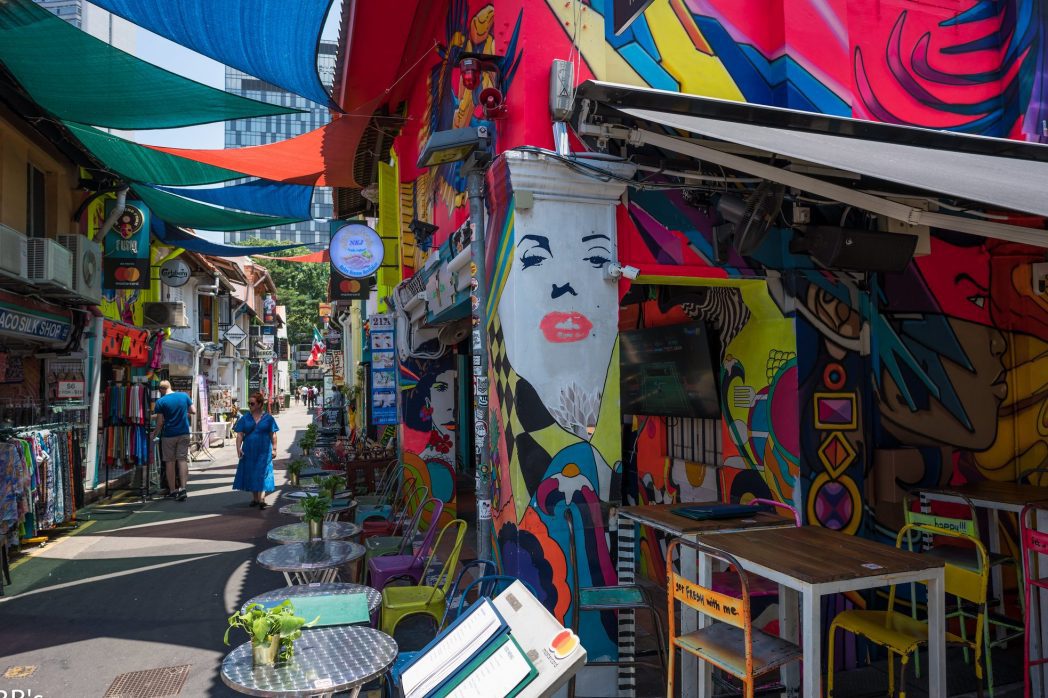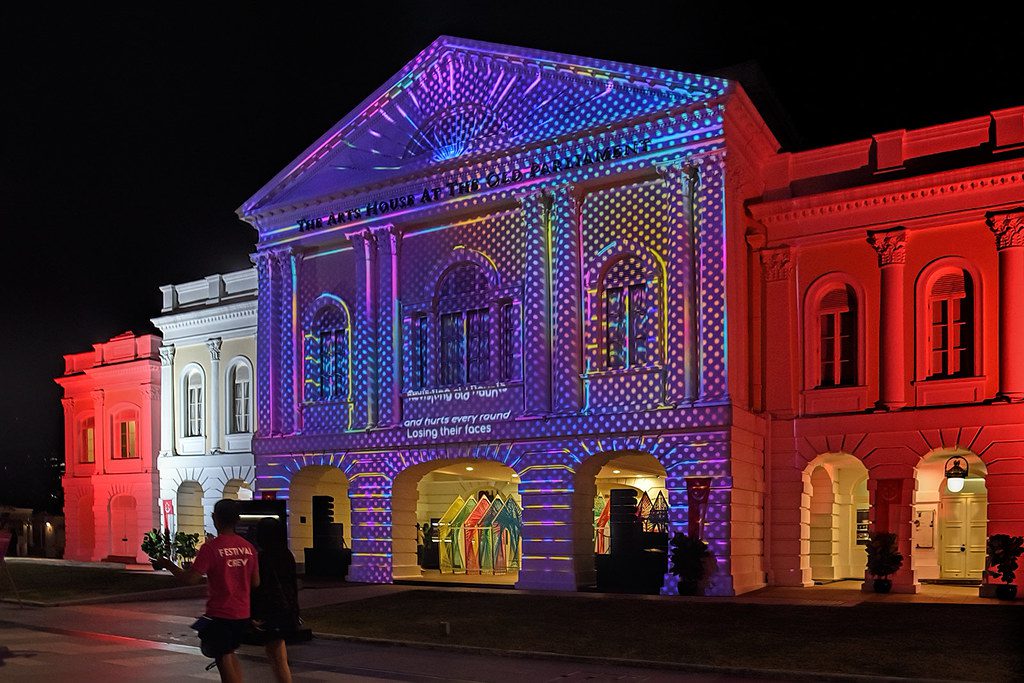Building a Creative Culture From a Rigid Singapore

Skift Take

On Experience
Colin Nagy is a marketing strategist and writes on customer-centric experiences and innovation across the luxury sector, hotels, aviation, and beyond. You can read all of his writing here.As countries rebuild from the devastation of Covid, they need to take stock of their core brands, but also figure out how to best articulate new stories to attract a new audience of travelers.
One place that stands out to me as having a huge opportunity is Singapore. It is one of the most dynamic business and growth success stories in the modern world. In a few generations, and without significant natural resources, it has become a banking, technology, and trade hub. Visitors marvel at the airport, the infrastructure, and emphasis on green space, and they see a high-functioning society.
And as the country emerges from a global pandemic, it also has a strong card to play that might not be readily apparent: the burgeoning creative culture in a society that has generally prized operations and execution above most else.
Much of the country's success can be attributed to the vision of Lee Kuan Yew, who presided over three decades of development, and whose vision, both micro (the perfectly manicured garden canopy on the route from the airport into town) and macro (attempting to create housing policies that ensured integration among the country's many ethnic groups and an emphasis on English education), set the stage for where the country is today. The rise wasn’t without human rights concerns: The caning of criminals and super-strict laws made headlines around the world.
For all the rapid progress, the big critiques of the country have been around their strict laws and corporal punishment, as well as the feeling of sterility and predictability it can project. During its rise, Singapore gained notoriety for how harsh it was toward the slightest transgression. News of canings made international news, and small things like chewing gum were illegal. As Cynthia Rosenfeld recently wrote in Surface magazine, “The country’s entrenched top-down, management-centric mindset hasn’t exactly made it a ripe breeding ground for creative fields.”
This is changing. And the metamorphosis is still in its early stages, but the green shoots of creativity are rising and will surely have an impact on inbound tourism and the narrative of the country. Sure, the MBA-mindset culture and top-down management thinking are still very prevalent, but undercurrents are moving in the right direction. Whereas with previous generations success for one’s children meant doctor or lawyer, the scope of acceptable employment is expanding.
Johann Khairi, communications manager for the Arts House in Singapore, told me that he once aspired to be a full-time dancer but felt some headwinds. “During my time as a student, there were two art schools that hadn’t established themselves yet; hadn’t produced top names on the world stage. Also, the news would talk about graduates and their average earnings, and these weren’t high coming from these schools.” The prevailing idea to study to maximize return on investment was very much entrenched.
The launch of the School of the Arts (SOTA), Singapore's first specialized art school, serves as a catalyst for moving careers in the arts in the right direction. Khairi joked, “If only I was born four or five years younger, I could have pursued the arts from a school point of view.” He told me that now, graduates from these schools are going all over the world and having a strong career. Plus, over the past few years, he’s noticed many friends make a mid-career pivot back into the arts. “I’ve seen a few people make a mid-career switch, he said. “People that had a background in the arts that went and became lawyers, accountants, auditors, or bankers have moved back into dance, theatre, and acting. There’s a growth in the art climate where people feel like they can give it a shot.”
Generational Shift
Jay Soo, an entrepreneur who currently runs the production company Moving Bits, told me that he studied Electrical Engineering to satisfy his parents, but then went to Los Angeles to study music. It is a common refrain from many Singaporeans of a certain generation: the push-pull between creative desires and what is expected. Soo, who has won creative awards for his company’s creative output at home and abroad, is uniquely positioned to talk about the shift: he’s grown up in Singapore and has seen generations of change.
“From the time I started, the improvement has been leaps and bounds. Everyone is much more open-minded. There’s a generational shift, especially now that you can make a living in things like commercial creativity.” He added there are some constraints, notably overcoming cultural operating systems: “We aren’t a whimsical society; we are focused on economic indicators. We are pragmatic to a fault and as a result not always the best storytellers.” Still, as a Singapore based entrepreneur, Soo is exporting commercial creativity outside of the country, with contracts in Hong Kong, Malaysia, and Walt Disney Imagineering Asia. It is a viable export from the country.
Another element of creativity can be seen with the evolution of startup culture. Mark Chong, a professor at Singapore Management University, Singapore's version of Harvard that trains many of the country’s future leaders, told me over coffee that the way entrepreneurship is covered in the press and homes has recently changed for the better. It’s no longer something that only happens at the fringes, but rather seen as additive with some level of social capital attached. Kirtan Panel, the founder of Sama, a firm that streamlines the business of cross-border labor with an emphasis on human rights, told me "considering the target market for us was Asia and the Middle East, it made the most sense. Singapore has super clear regulatory guidelines, a robust financial system, and a growing startup ecosystem."
Of course, tech startups and venture capital do not make a creative culture. Getting there is about the country moving further to balance its creative imports with creative exports of its own. Here, again, it’s not hard to find examples that point in a positive direction. Design Orchard, a boutique on the main shopping thoroughfare Orchard Street, offers wares from young Singaporean designers displayed with the same refined framing as the luxury boutiques just a few doors down. But it’s not all roses: Some creative fashion business owners I talked to in other parts of Singapore mentioned it’s hard to break through with handmade things and sell in a culture that is still obsessed with labels and prestige. Still, design as an economic category, defined as "place-making, object-making, image-making, and experience-making" contributed about 0.6 % of Singapore’s value-added to GDP in 2017, at about S$2.4 billion. This has grown from S$1.9 billion in 2011, according to data from the Singapore Design Council. On a macro level, the country is attracting design-led businesses, most notably Dyson, who moved their headquarters to Singapore.
Elsewhere in culture, creativity and the arts are being prioritized: Places like the School of the Arts train the next generation of actors and dancers.
And, as wealth grows and homegrown culture becomes a priority, the quality of performing arts has also improved, seen with the programming of Arts House, which hosts international stars like Ryuichi Sakamoto alongside hometown playwrights. There's also social capital attached. Sarah Martin, currently the CEO of Arts House, came from running the incredibly complicated operations of the country’s legendary nighttime F1 event. She told me over a drink that the appreciation of art in Singapore has evolved.
After returning to the art world from running F1, she observed an observation of people moving from "spectators into a desire for more interaction and deep dives." Attending a series of performances at Arts House pre-COVID, I witnessed not just passive audiences of shows, but people showing up to the discussions with authors after and side panel activity that suggests a deeper level of engagement. “The landscape has changed in terms of the taste of our audiences, and what they expect,” said Martin.
I spoke to another actress who has witnessed years of progress in the arts, even playing a role that recently put Singapore even more on the map. Tan Kheng Hua, the award-winning actress/producer, who recently starred in Crazy Rich Asians, told me, "a life that is connected naturally in an artistic manner is so much more apparent today than ever in Singapore." She continued, "once this sort of life proves to be effective and essential, it will have effects in all the other areas we live with — education, entrepreneurship, conversation, parenting, leisure, value-systems, etc."
Covered in Living Plants
Another facet of creativity can be found in the innovation in Singapore’s green architecture: Buildings are covered in living plants and are much more sustainable, while also pushing the bounds of traditional aesthetics that the country had in its first wave of growth. The country is being held up as a model of thoughtful urbanism. According to Eco Business, “While Singapore’s emissions contribute only about 0.11 percent of the global total, the nation’s acclaimed city-in-a-garden setting can be a role model for other cities…Singapore has already exported its urban development expertise, notably to Tianjin Eco-city in China, and Amaravati in India.”
In the end, it’s not all black and white: as if the country is waking up from a spreadsheet and rigor-driven culture. Creativity has always been present in various forms in Singapore, with the culinary scene as the most notable example. The next step is turning these pockets into something more sustained: A crawl, walk, run type of evolution.
Pre-pandemic, tourism was already strong. The opportunity here is to move from the business hub with a side of culinary hotspot into a full-fledged, creative-centric destination that brings all of these things together in a new, strategic and guest-centric way.
And judging from my personal experience, there’s still some way to go to get to the run phase. A creative talk I gave at the aforementioned SMU was peppered with brusk questions of ROI from very serious students. Perhaps not surprising for business students, but some of my informal and non-statistical canvasing resulted in raised eyebrows and dismissals at suggestions of creative culture.
The Differentiating Card
But when you spend time in the entrepreneur-focused members clubs, overhear conversations at coffee shops, chat to hospitality entrepreneurs (who are driving a lot of the innovation), and visit design studios and creative agencies, there’s a strong sense that the nation is in the early stages of building a creative culture that could, in time, be a meaningful export and compete on the world's stages as well as a magnet for the increasingly mobile creative class.
And with the challenges of rebuilding after the pandemic, it is a powerful and differentiating card to play if done correctly.






